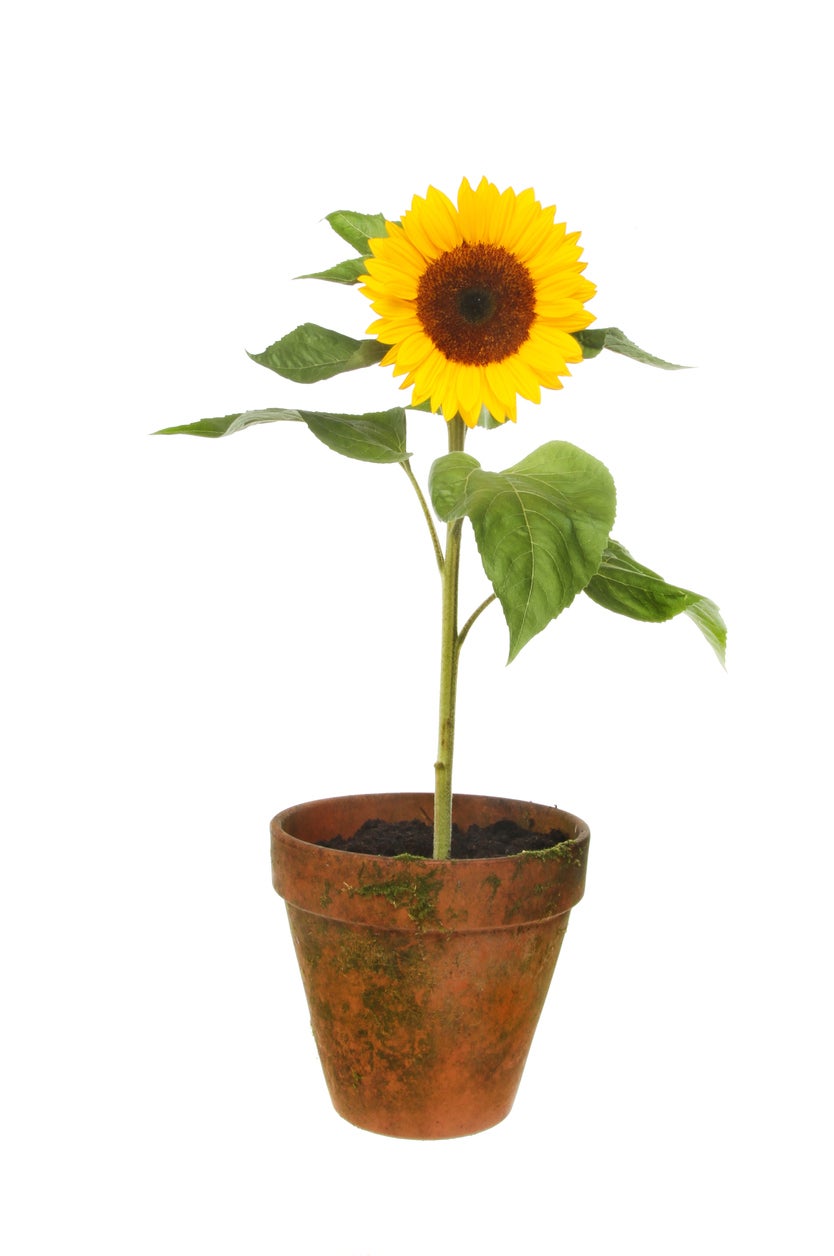How Well Do Potted Sunflowers Grow: How To Grow Sunflowers In Planters

If you love sunflowers but lack the gardening space to grow the mammoth blooms, you might be wondering if you can grow sunflowers in containers. Potted sunflowers may seem an unlikely endeavor, however, some of the smaller dwarf varieties do very well as container grown sunflowers, and even the giant cultivars can be grown as container plants. Growing sunflowers in a pot or planter does require some special care though. This article aims to help with that.
Can You Grow Sunflowers in Containers?
As mentioned, dwarf varieties, those under 4 feet (1 m.) in height, lend themselves very well as container grown sunflowers. If you want to grow the really impressive 10 footers (3 m.), which is still doable, a larger container will be required.
About Potted Sunflowers
The size of the sunflower will dictate the size of the pot. Smaller varieties will do well grown as sunflowers in planters. Cultivars that grow to 2 feet (61 cm.) or less should be planted in a 10 to 12 inch (25-31 cm.) diameter planter while those that grow 4 feet (1 m.) or taller require a larger 3 to 5 gallon (11-19 L.) or even larger pot.
How to Grow Sunflowers in a Pot
Regardless of the variety, all sunflowers grown in containers should have drainage holes and be situated in an area that receives full sun.
Sunflowers need well-draining soil that retains moisture. A good quality general purpose potting soil will work well. For larger pots, mix the potting medium with some vermiculite to lighten the weight of the pots.
Add a layer of drainage material such as gravel, terracotta pot pieces, or polystyrene foam to the bottom of the pot and then add the potting medium, filling the container to about halfway. Plant the sunflower and fill in around the roots with additional soil, then water well.
Be sure to keep an eye on the watering needs of sunflowers grown in containers. They will dry out more rapidly than those grown in the garden. A general rule of thumb is to provide an inch (2.5 cm.) of water per week depending upon weather conditions. Water the plants when the top inch (2.5 cm.) of soil feels dry to the touch.
Gardening tips, videos, info and more delivered right to your inbox!
Sign up for the Gardening Know How newsletter today and receive a free copy of our e-book "How to Grow Delicious Tomatoes".
Fertilize the flowers with a high-nitrogen liquid plant fertilizer and then when a bloom begins to form, switch to a liquid fertilizer high in phosphorous.

Amy Grant has been gardening for 30 years and writing for 15. A professional chef and caterer, Amy's area of expertise is culinary gardening.
-
 Try The Trend – Turn Any Bed Into A Keyhole Garden With This Clever In-Ground Composter
Try The Trend – Turn Any Bed Into A Keyhole Garden With This Clever In-Ground ComposterKeyhole gardening is an efficient and sustainable practice that saves space. Get started on this DIY project quickly and easily with an in-ground composter.
By Bonnie L. Grant
-
 4 Superfast Composting Methods: Turn Waste Into Garden Gold In 30 Days Or Less
4 Superfast Composting Methods: Turn Waste Into Garden Gold In 30 Days Or LessTry the fastest composting methods to turbocharge your pile and transform kitchen scraps and garden waste into finished compost in just a few weeks.
By Mary Ellen Ellis